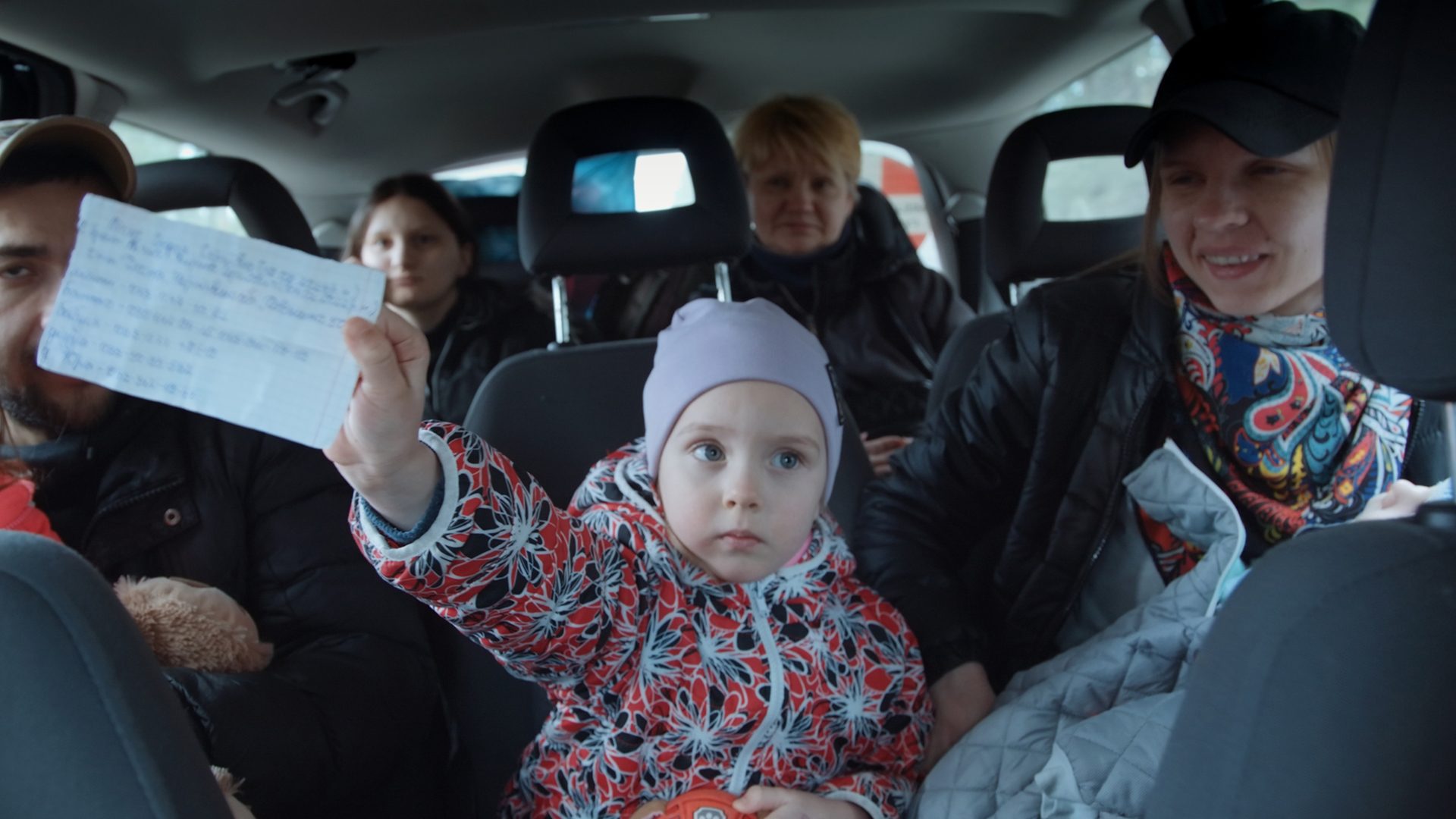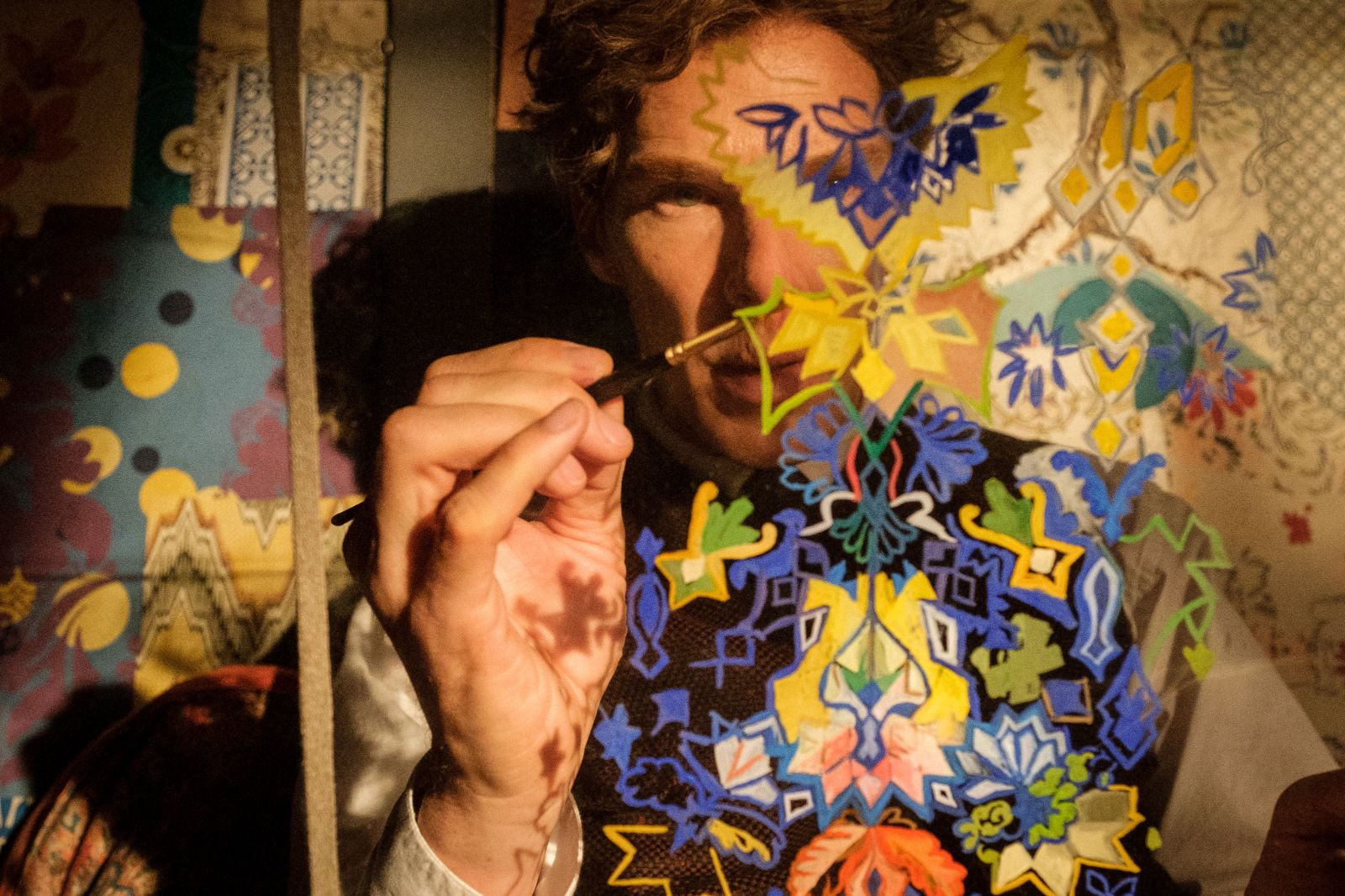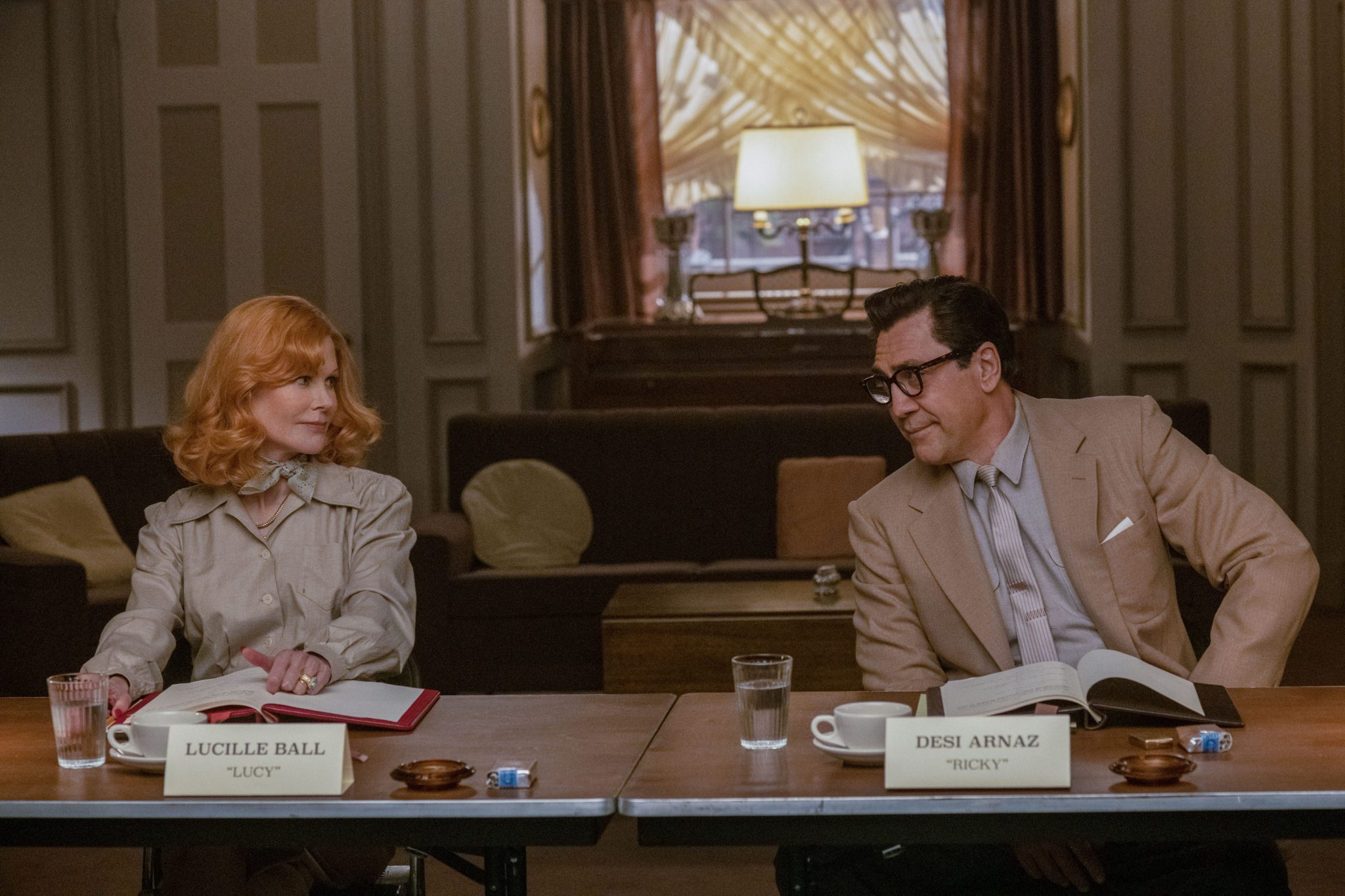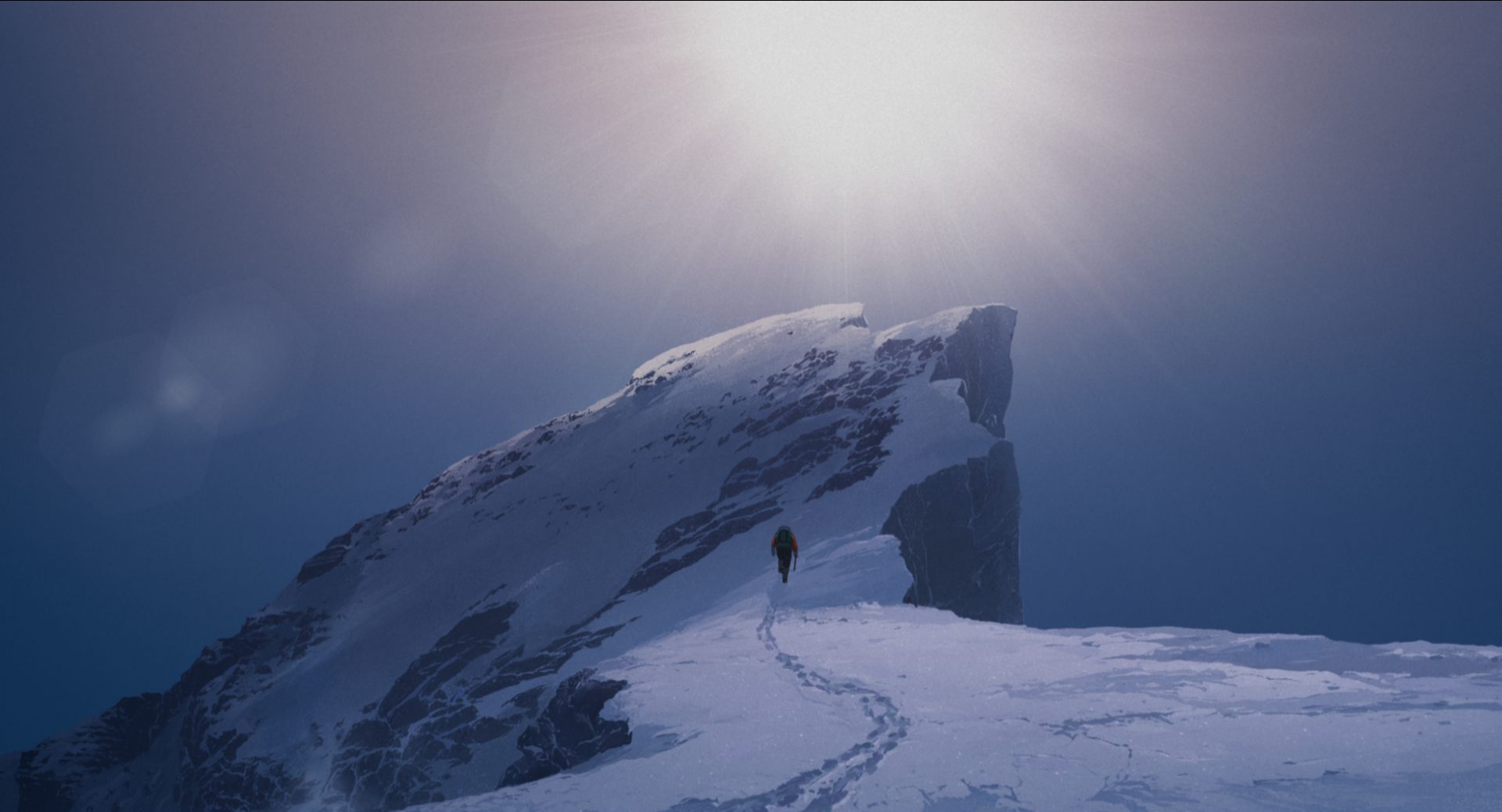Since the war began, more than 15 million Ukrainians have left their country seeking safety. In the Rearview is a documentary that takes place mostly inside a van filled with various people on their journey to an unknown future.
When the war started and many people began seeking safety in Poland (and other countries) Polish filmmaker Maciek Hamela bought a van and began driving to the border to help people once they had made it that far. Soon he was venturing into Ukraine to pick up others. In time, he brought in a second driver, who could shoot film during the day to document what was happening.
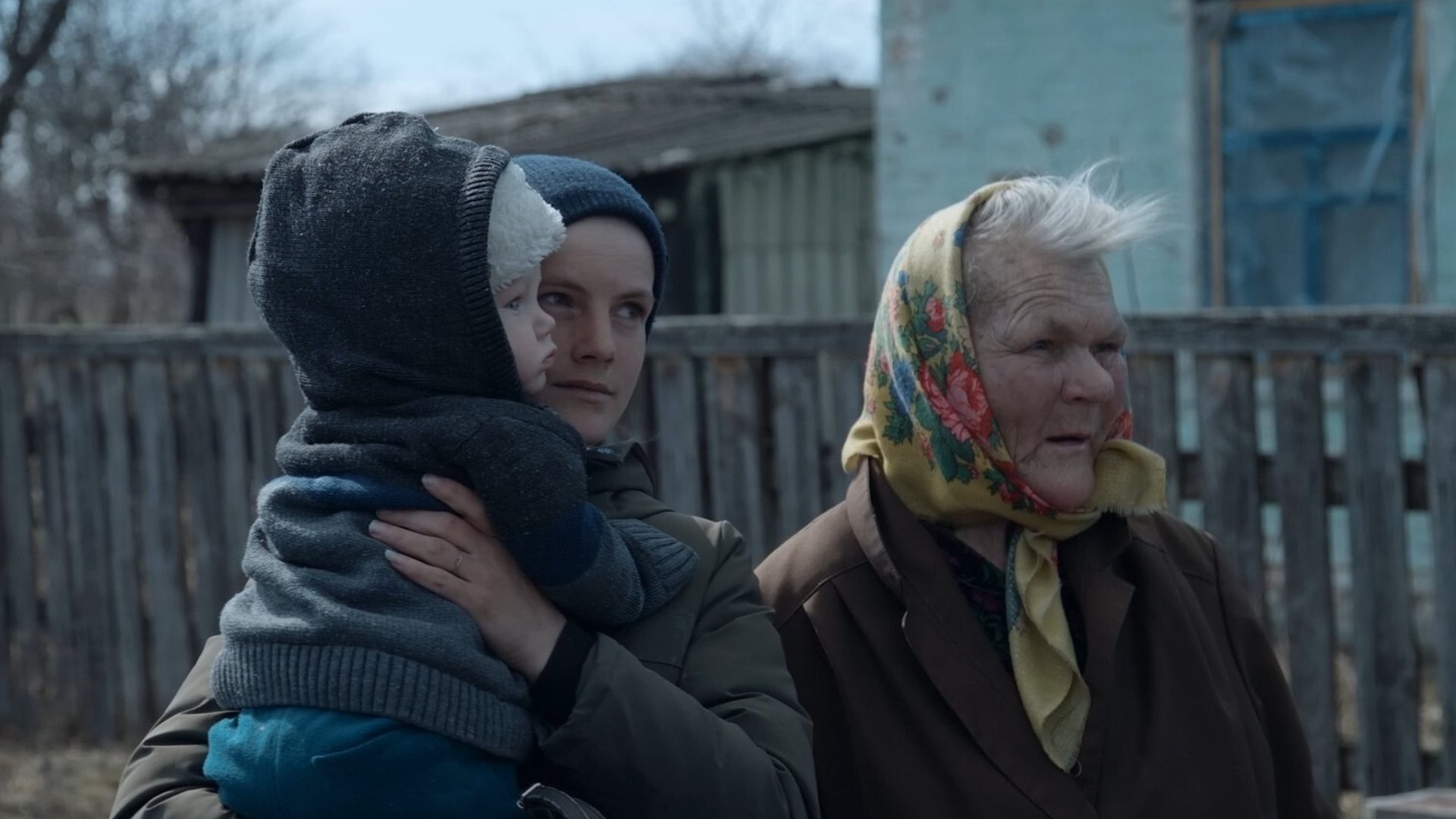
In the Rearview becomes a different kind of war documentary. It is not about the fighting. It shows some of the human costs of war. We never spend too much time with any group of travelers. Instead, we see a broad cross-section of Ukrainian people. Some are from rural areas, others from cities. Most, but not all, are traveling with children. We hear some of their stories of who and what they have left behind. We hear of fears and nightmares. We hear of torture. One trip involves an African woman with a serious medical condition that he’s trying to rush to the border where she can be transferred to an ambulance and paramedics.
When the camera is not focused on the back seats, the war itself becomes the background. Hamela has to deal with military checkpoints, detours because of downed bridges, turning around because of mines in the road. The road outside is often littered with destroyed cars and tanks. We drive past the shells of bombed buildings.
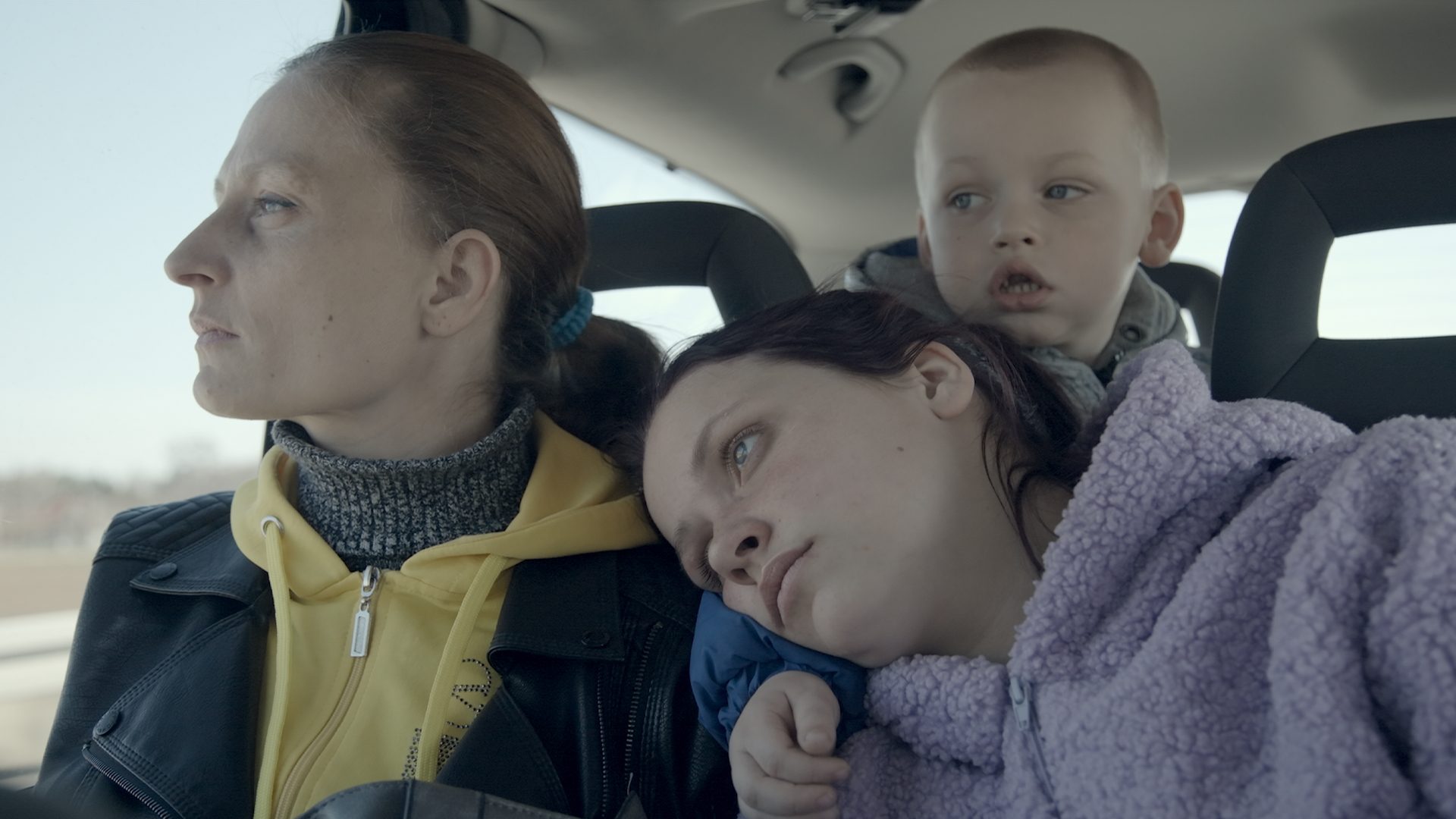
Perhaps most striking, for me, was to just observe the faces of the passengers. For children, this sometimes seemed like an adventure (although they also were dealing with loss and trauma). At one point a child sees the sea for the first time with wonder (and wanting to come back after they can return home.) A few of those in the van were talkative, but most seemed to have expressions of numbness. Few are angry. Few even express relief. This is not so much a journey of hope as it is one of desperation.
The hope in the film comes when we get glimpses of reunions—families coming back together is a place of safety, even if the future there is unknown.
It is hard to imagine what it is like to leave home, extended family, a cow, pets, and all the rest of what makes up our lives to go to an unknown country, even if one hopes to return at some point. Yet such migrations seem to always be a part of war. In the Rearview shows us a part of war that is often overlooked because each individual story seems so small in comparison to the larger picture. But for these people, this is the most important thing in their lives.
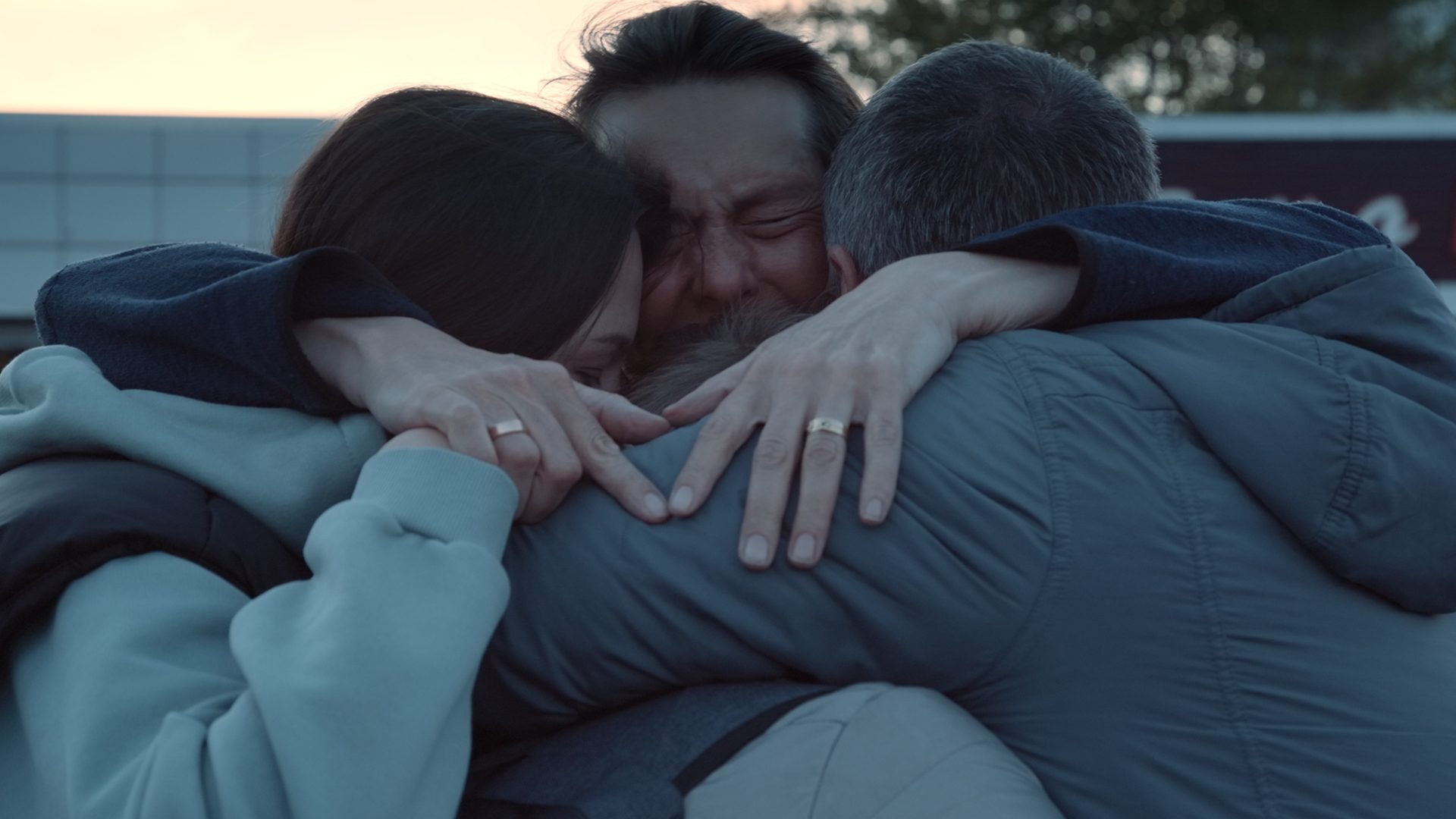
In the Rearview is available in VOD.
Photos courtesy of Film Movement.

